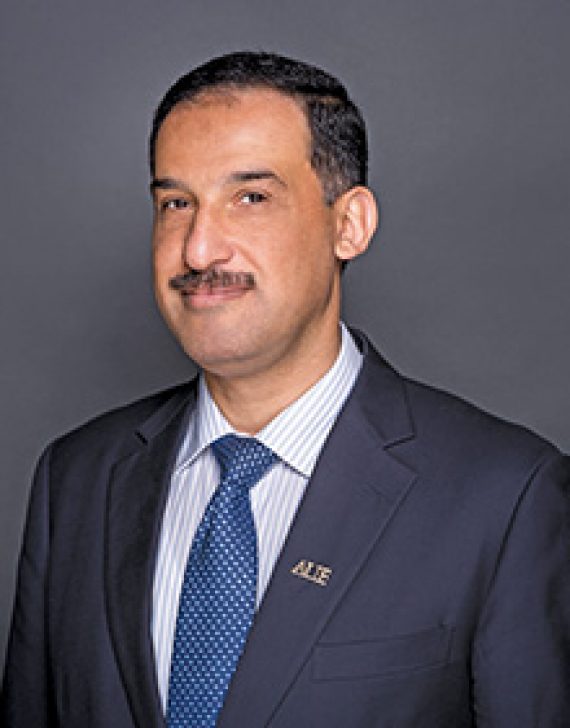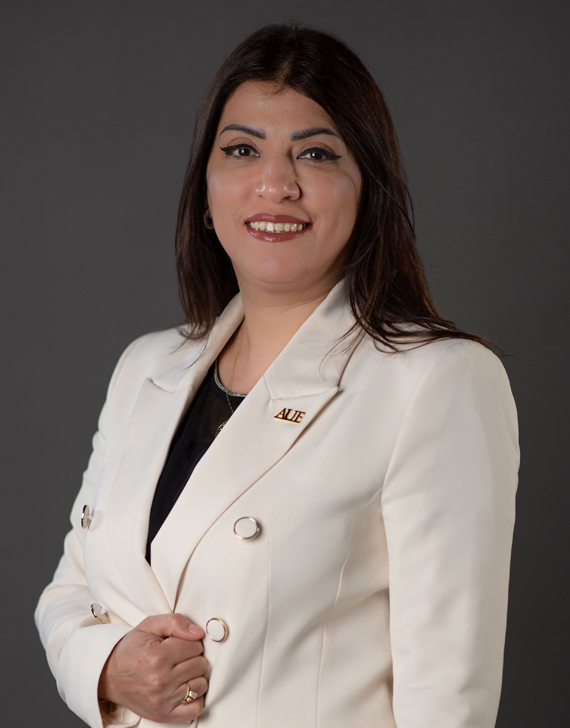
- Overview
- Program Structure
- Accreditations
- Faculty
- Admission
-
Duration
2 Years
-
Classes
Weekday Morning Weekday Evening
-
Fees
Tuition (One Semester) ……… Approx. 42,000 AED
One academic year is two semesters
Admission (One Time) ……… 3,500 AED
About Program
Enter the fascinating world of intellectual property with our Master in Intellectual Property program. Delve into the realms of copyright law, patent law, trademark law and intellectual property rights management. Gain expertise in navigating the complex landscape of intellectual property protection, enforcement and commercialization. With the increasing importance of intellectual property in the digital age, this program opens doors to exciting career opportunities in law firms, technology companies, research institutions and government agencies. Join us and become a guardian of innovation and creativity, shaping the future of intellectual property rights.
Program Goals
- Meeting needs of the local and regional market from experts and specialists in the various fields of intellectual property.
- Developing scientific research in the field of intellectual property in accordance with the legal rules valid in UAE through supporting Master’s theses, and emphasizing on comparative analytical studies.
- Establishing a legal center specialized in Gulf legal studies in the field of intellectual property to contribute to preparation of Master’s students in this field.
- Supporting the protection of intellectual property and making the academic program as the axis of the intellectual property development in the UAE and GCC countries through providing consultations, holding academic and occupational conferences for the stakeholders within the social service framework.
Program Learning Outcomes
- Discuss the knowledge related to the intellectual property in a deep and comprehensive way in addition to the relevant knowledge.
- Analyze the contemporary knowledge of the scientific research to be a pillar for constructive critical thinking, and familiarity with the recent developments within the intellectual property framework, occupational practice, and knowledge production in order to find new concepts and resolutions for the new emerging challenges.
- Analyze the relevant issues in light of the scientific reality, find creative solutions and suggestions related to the academic and professional fields, to create new concepts in the intellectual property through integrating other cognitive fields.
- Use the acquired skills in the field of intellectual property, through refining skills that reflect thinking and. analyzing in a high degree of independence.
- Develop the ability to take responsibility and independent performance by making decisions, taking into account the study of professional ethics.
- Creates methods that support to initiate and lead the teamwork.
- Propose new methods for taking appropriate decisions making into account unpredicted data.
Program Structure
Course Category
Bridging Courses
Core Courses
Free Electives
Thesis 1
Thesis 2
Total (Excluding Bridging Courses)
Total Number of Courses
9
7
2
1
1
Total Number of Credit Hours
22
21
6
3
6
36 Credit Hours
- Bridging Courses
- Core Courses
- Free Electives
- Thesis
The second part of the curriculum includes a detailed and in-depth study of one of the topics of the first part, such as the international registration of trademarks, licensing for utilization of trademarks, geographical indications registration methods, international conventions related to trade names and trademarks. It also includes presentation and analysis of samples of decisions by national and international courts regarding trademarks and trade secrets.
The curriculum of this course enables the students to understand the definition of copyrights, the conditions for granting legal protection of author right, works covered by copyright and the duration of their protection, moral and economic rights to the author of work, international agreements such as the Berne Convention for the Protection of Literary and Artistic Works, and the WIPO’s role in this field.
The course also includes a detailed and analytical study of several topics including exceptions to copyrights, licensing the use of copyright in the digital environment and how to protect it from hacking and what has been settled by the local and international judiciary in this field. The curse also enables the students to understand the collective management of rights and what has settled in WIPO and international agreements for copyright protection in the digital environment.
The curriculum of this course introduces the students to the definition of related rights, their types, the duration of their protection and the relevant international agreements such as the WIPO Performances and Phonograms Treaty (WPPT), the international organizations concerned with them, and the role played by the World Intellectual Property Organization (WIPO) in this field.
The curriculum also covers a detailed and analytical study of some topics, including exceptions to related rights, licensing in the digital environment, protection of related rights in the digital environment and methods of protection such as civil protection of related rights, compensation lawsuit and procedures, methods of compensation and penal protection for neighboring rights, infringement of rights holders, established penalties and international treaties on the protection of neighboring rights holders and the Rome Convention for the Protection of Performers, Producers of Phonograms and Broadcasting Organizations (1961).
The curriculum also provides experiences of some countries in this field and the results they have achieved, as well as several topics including procedures for applying for a patent, the implications of granting a patent, the compulsory license to exploit the patent, and the international agreements in this regard.
The curriculum also provides experiences of some countries in this field and the results they have achieved, as well as several topics including Rights granted to owners of industrial designs and designs, international protection for industrial designs and designs, and international treaties on industrial designs and designs such as the Paris Convention for the Protection of Industrial Property (1883) and the Hague Agreement Concerning the International Registration of Industrial Designs (1925).
The students are assigned to prepare legal research using the approved research methods, and then present it orally to his colleagues
The curriculum also provides experiences of some countries in this field and the results they have achieved, in addition to a detailed and in-depth study in several topics including digital works and methods to protect them legally and technologically, the most prominent international bodies working in the protection of copyright and related rights in the digital environment, the role of international agreements in the protection of digital works -Berne Convention for the Protection of Literary and Artistic Works and TRIPS Agreement- and technological measures to protect digital works.
The curriculum also provides experiences of some countries in this field and the results they have achieved, as well as a detailed and in-depth study in several topics including the emergence of patents and trademarks in the pharmaceutical sector, the legal regulation of the licensing contract for the exploitation of patents, data protection, recent developments in international privacy regulation, personal data or anonymous information, transfer or sale of personal data, liabilities and compensation, regulatory limitations, quality assurance restrictions necessary for medical product development and drug manufacturing, clinical investigations, the United States Food and Drug Administration, European Medicines Agency and UAE Ministry of Health and Prevention.
The curriculum also provides experiences of some countries in this field and the results they have achieved, in addition to a detailed and in-depth study in several topics including unfair competition, legal regulation in national legislation, international agreements, Intellectual property agreements in force in the context of economic development, intellectual property and theories of justice, examples of the negative economic effects of infringements of intellectual property rights and unfair competition
Also, the curriculum covers a detailed and in-depth study several topics including the mechanism of work of the entities responsible for the protection of plant varieties, the role of the International Union for the Protection of New Varieties of Plants (UPOV), procedures for registering new plant varieties, the effect of registration, duration of protection and identifying technical aspects including Distinctness, Uniformity and Stability (DUS) Testing, UPOV Guidelines, field testing, biochemical and molecular techniques statistics, data analysis, reporting and exploitation of plant breeders’ rights, breeders’ rights versus farmers’ rights, researcher rights, farmers’ rights and communities’ rights.
The curriculum also provides experiences of some countries in this field and the results they have achieved, in addition to a detailed and in-depth study in several topics including legal means to protect trade secrets in UAE legislation such as civil protection and penal protection resulting from the protection of trade secrets, precautionary measures, compensation for damages, penalties.
Recommended Study Plan
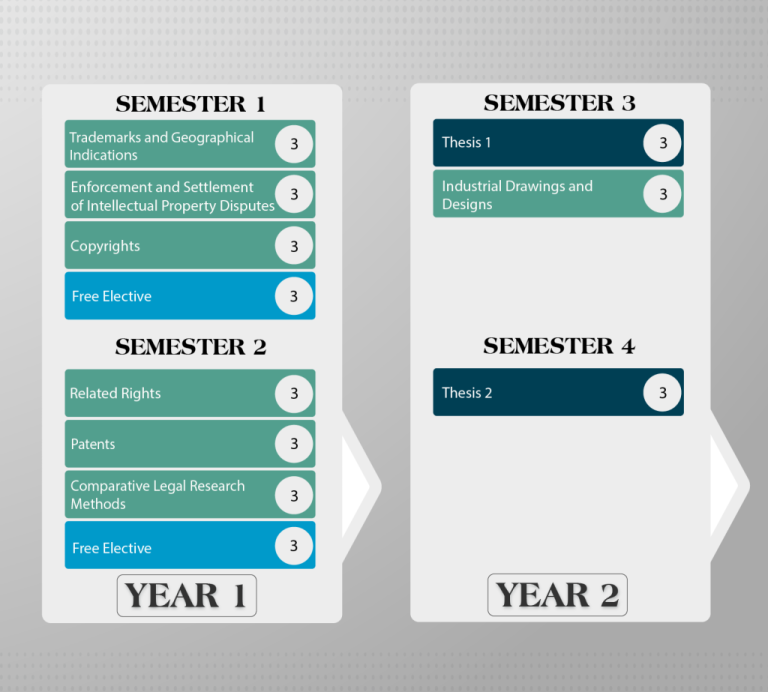
Accreditations
The American University in the Emirates is licensed by the UAE Ministry of Education – Commission for Academic Accreditation | caa.ae
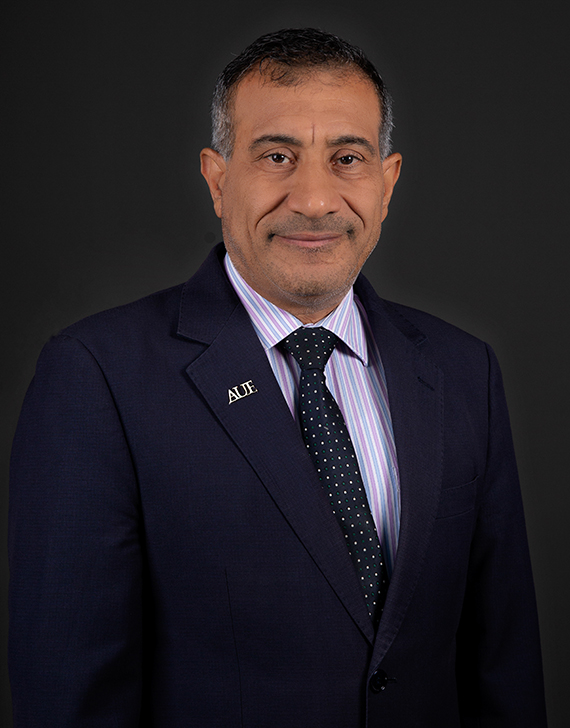
Prof. Raad Adham Al Sammarraie
Professor / Program Director – Masters of Intellectual Property
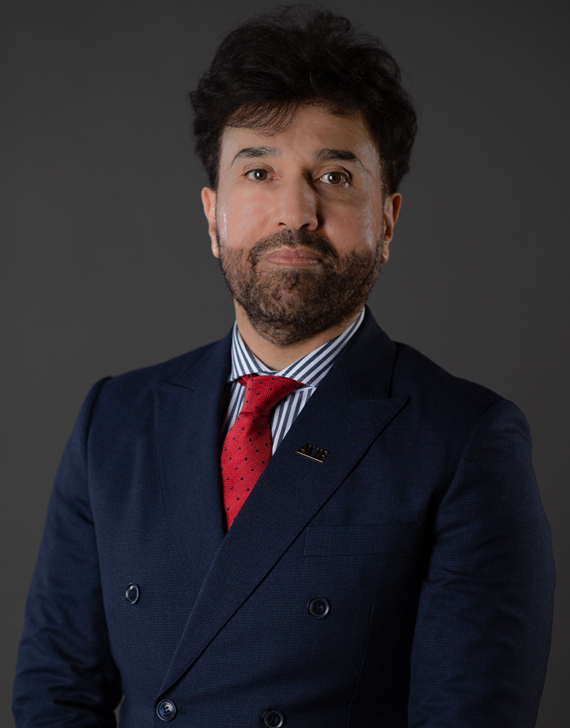
Dr. Qusay Al Falahi
Associate Professor / Program Director – Master in Arbitration

Dr. Ehab Alrousan
Associate Professor / Program Director - Master in Criminal Sciences
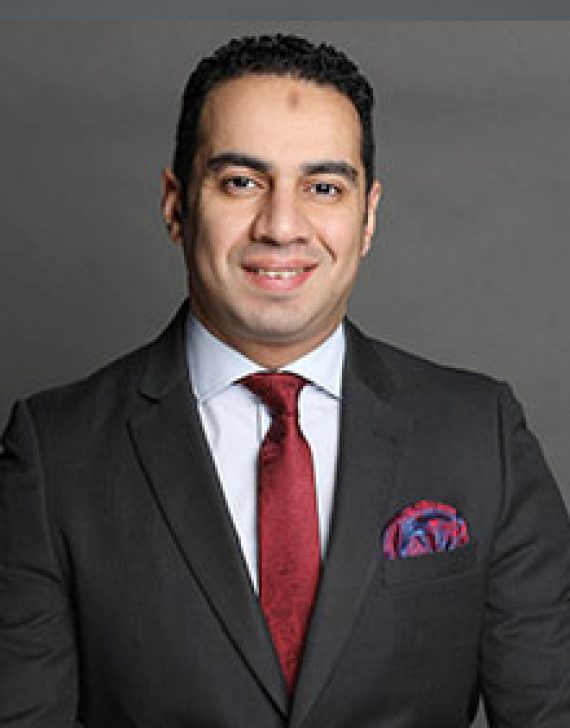
Dr. Ahmed Eldabousi
Associate Professor
Graduation Requirements
- Earn a minimum CGPA of 2.00 on a scale of 4.00.
- Successfully complete all courses as described in the study plan.
- The Degree Completion requirements must be met within the timeframe of the program.
- Successfully complete the “Thesis” course.
Joining the Program
- Fall Semester
-
September
-
Spring Semester
- January
- Summer Semester
- May
